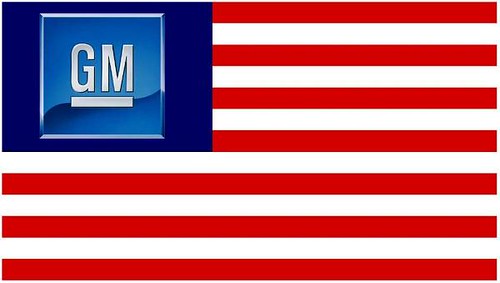Busted Transmission: Can the U.S. government transform GM into a true global car company?
(Source: Foreign Policy Magazine)
Outside a small group of nihilists and committed free marketeers who’d have let General Motors go under, no matter the price, few question the necessity of the Obama administration’s plan for the once great American company’s reorganization in bankruptcy. But as a U.S. taxpayer, and therefore one of GM’s brand-new owners, I have my doubts about our ability to manage this new property. Yes, GM’s previous owners proved unable to run a competitive car company in a global marketplace, but is the U.S. government really the best one to transform it? Already, the particulars of the Chapter 11 arrangement lead me to fear that the same sort of internal politics, unthinking nationalism, and generalized aversion to engineering risk that have hobbled GM for decades will continue to haunt its new incarnation.

One place where you won’t hear for-attribution criticism of the “new” General Motors these days is GM headquarters. Perforce they are obligated to display their gratitude with the unfailing enthusiasm that a $50 billion-plus investment in a failing business minimally entitles its benefactors to expect in return. Although the collegial tone of the new rapprochement comes 50 years late, it is heartening nonetheless to see American industry finally welcome Washington’s involvement in matters like safety, fuel economy, and emissions regulation.
Even Robert “Maximum Bob” Lutz, GM’s outgoing product czar and vice chairman, and a fierce critic of government meddling from the “give me back my bullets” wing of Detroit’s old school, has experienced an astonishing change of heart, at the ripe age of 77. Speaking to a gathering of journalists in Motor City the other week, Lutz unhinged every jaw in the house when he shared his thoughts on how the White House automotive task force ought to become a permanent fixture. Of the unprecedented government-industry collaboration the Chrysler and GM bankruptcies begat, Lutz, an ex-Marine attack pilot and near-libertarian known for making his daily commute in a decommissioned Czech jet fighter, quipped: “Jeez, it only took 30 years for somebody to finally figure [government-industry partnership] out.”
Er, right. Thirty years and a couple of epochal bankruptcies.
Questions about the government’s intentions for the new GM Lite already abound. Notably, what will and what should the company’s policies be, now that it is controlled (in theory) by and for the benefit of U.S. taxpayers, who own 60 percent of its shares?
Will GM be underwritten so as to lead the market in the direction of fuel saving and new technologies? Or will it trim its sails and attempt to get by on its sometimes-profitable religion of pickup trucks and SUVs, perhaps ones that get slightly better mileage? GM is still tooled up to build them.
Ever since the 1920s, when GM’s Alfred P. Sloan introduced the precepts of what came to be known as Sloanism — a car for every purse and purpose — a good day at a car dealership was one when you sold someone “more car than they need.” Automobile marketing often appeals to man’s baser emotions. Greed, lust, and envy come to mind, as do excessive horsepower and other costly and unnecessary options that have been larded on to new cars to boost profits for longer than any of us have been alive. So, you can’t help wondering, has the U.S. government entered the business of encouraging people to live out their most insane automotive dreams? Will it labor to create demand for automobiles when and where there is no need, as generations of car companies have done before it?
And where do GM’s new taxpayer/shareholders stand on the matter of outsourcing work to Mexico or South Korea or China or anywhere else, as the old GM did whenever it got the chance? Will Chevy production lines in places like Toluca and Silao, Mexico, come home to the USA? The old GM went in for cheap overseas labor. Has the government now entered the business of using taxpayer money to export jobs? Is this the change we need?
Myriad practical and philosophical quandaries aside, one vital series of questions about the “new” GM — which brands will be kept, sold, or terminated — has already been answered. Chevrolet, Buick, Cadillac, GMC, Australia’s Holden, and South Korea’s Daewoo are to be spared. To be sold: Saturn, Hummer, and Sweden’s Saab are available outright, and operating control of GM’s German division, Opel, is to be sacrificed in a deal brokered by the German government outside U.S. bankruptcy proceedings. For the scrap heap: Pontiac, the venerable division that once claimed to “build excitement.” In limbo: Opel’s English sister brand, Vauxhall.
Click here to read the entire article.

Great helpful information, Thanks for this nice post, just subscribed your feed, hope you will update new post soon.
keep it up.
Aaron.